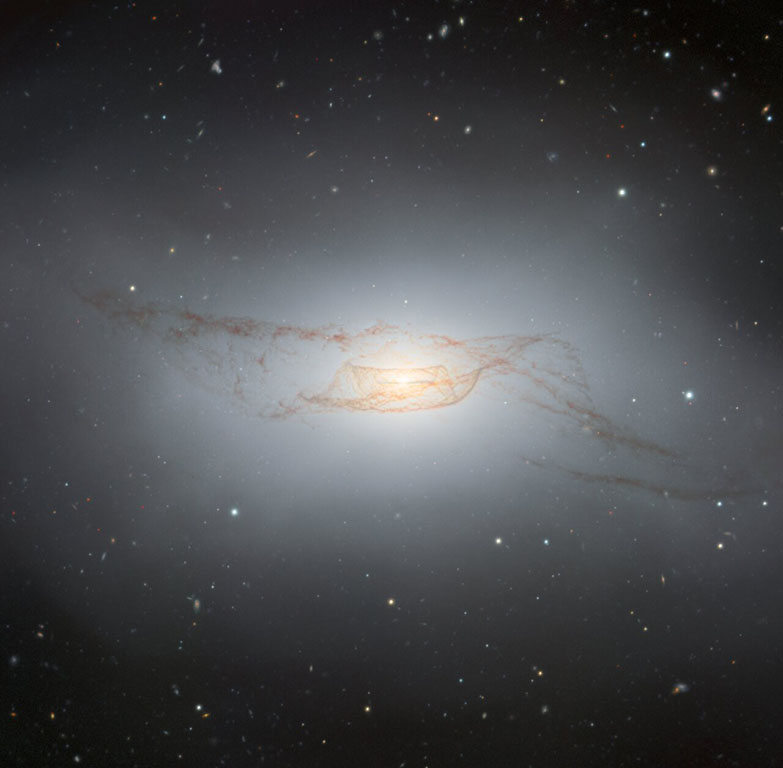The NOIRLab’s Gemini Observatory recently released a new image of the galaxy NGC4753 observed with the Gemini South Telescope. The galaxy’s twisty dust lanes were the topic of a paper (link to https://ui.adsabs.harvard.edu/abs/1992AJ....104.1339S/abstract ) in 1992 by IU astronomers Tom Steiman-Cameron and Richard Durisen, along with collaborator John Kormendy. They showed that the dust lanes are consistent with differential precession of a disk resulting from a long-ago collision with a small galaxy.
Seen from above the galaxy would appear like a normal spiral, Tom says. But because it’s nearly edge-on, we can see just how tangled the dust lanes are.
“For a long time nobody knew what to make of this peculiar galaxy,” Tom noted. “But by starting with the idea of accreted material smeared out into a disk, and then analyzing the three-dimensional geometry, the mystery was solved. It’s now incredibly exciting to see this highly-detailed image by Gemini South 30 years later.”
NGC4753 was discovered by William Herschel in 1784. Located only 60 million light years away, it’s part of the NGC4753 group of galaxies along the southern edge of the Virgo Supercluster.


 The College of Arts
The College of Arts